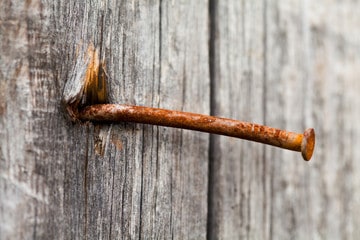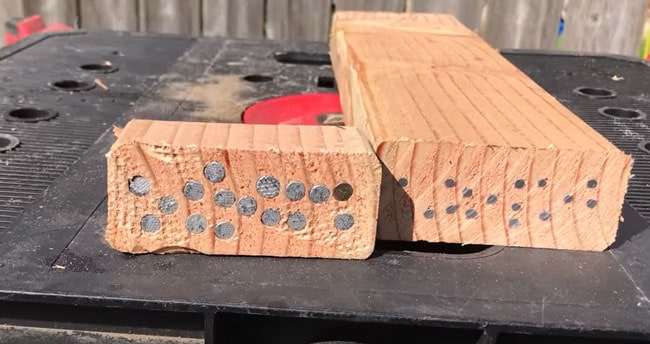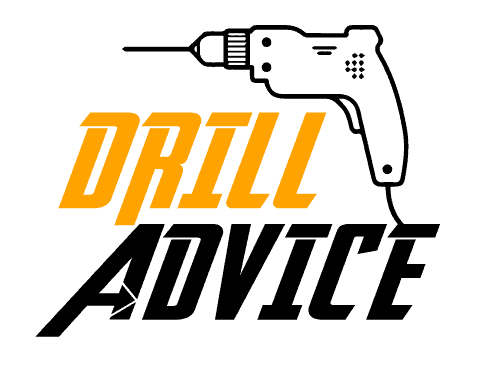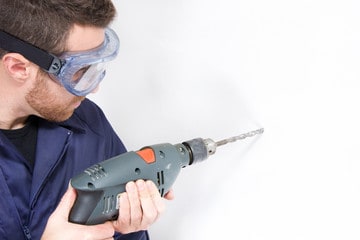Table saw is really important for fast and accurate wood cutting. A saw blade is used for the wood-cutting process and regular wood-cutting blades are not able to use to cut the nails or any metals. We have to cut the nails accidentally or any metals inside the wood that we have to cut using the table saw. In this guide, you can realize how you can cut the nails using the table saw and what you should have.
Generally, You can cut nails inside wood using a table saw with HSS or tungsten carbide saw blade. First, you need to detect the nail using a metal detector and then remove it to minimize any rusting problems. You can use a DIABLO saw blade for the cutting process.
Accidentally, we may have to cut the nail or any metal inside the wood. In this process, our saw blade and tool should not be damaged. So let me explain to you all in detail about the possibilities of cutting the nails using the table saw. So, let’s keep reading on!
What Should I Use to Cut Wood Workpiece with Nails?

Yes, you can cut a wood workpiece that includes nails using a carbide-tipped saw blade. These blades are made with carbide tips and those are 40 times more durable than regular saw blades. You can use a DIABLO saw blade for cutting a wood workpiece with the nail.
DIABLO is the most used saw blade, and you can buy it at Home Depot. It will cost about 31$, and it is available in various diameters up to 6 1/2″ with a various number of teeth.
Should I Detect the Metal Before Cutting It?
No, you should not detect the nail before cutting the workpiece with nails if you use DIABLO saw blade. But you should detect for metals if you use a regular saw blade in the table saw.
How to Cut Through Nails Using a Table Saw?

1. Identify the Nail
First, you should Identify the Nail or any metal inside the wood. You can use the metal detector for this task. Take a pencil and mark the cutting path, and make sure the nail has crossed the cutting path. To understand the effect of the nail to the cutting process.
2. Use the Proper Saw Blade
In this step, you must use wood and metal cutting blades for the cutting process. Normally, regular blades will damage the teeth when you use them for the cutting process. So you had better choose a suitable saw among these 8 types of table saws.
3. Keep the Low RPM.
In this step, you should keep a low RPM for cutting the steel. Low RPM will not provide a smooth cutting surface. So you had better keep the right RPM in a mid-value as it matches to both wood and steel. If you use high RPM it will affect the blade performance because steel cutting is better to do at low RPM. But if you use lower, you can see bad surface finishing. So have the average value for the with your experience.
4. Feed the Workpiece With a Lower Feeding Rate
After you set up the tool, start it. Then, you have to feed the workpiece by checking the RPM and surface cutting.
5. Hold Tight When Cutting the Nail
This is essential. You can observe that the workpiece can be shocked when the blade starts to cut the Nail. So touch it hard as it moves forward when you cut it. You should use a push stick or push blocks when you cut workpiece with nails.
Why Should You Not Leave Nail Inside the Woodworkpiece?
You should not leave the nail inside the workpiece If the wood is not treated to withstand water, it can lead to the wood swelling, warping, or cracking which can ruin the piece or the function of the structure. The excess water can lead to the development of mold and mildew, which can cause health problems.
If the nails are not stainless steel or galvanized nails, water can cause them to rust. This not only weakens the nails but can also lead to discoloration of the wood. Particularly if it’s located in an area that won’t interfere with further construction or decoration and doesn’t present a safety risk (like sharp edges). However, it’s generally viewed as poor workmanship.

